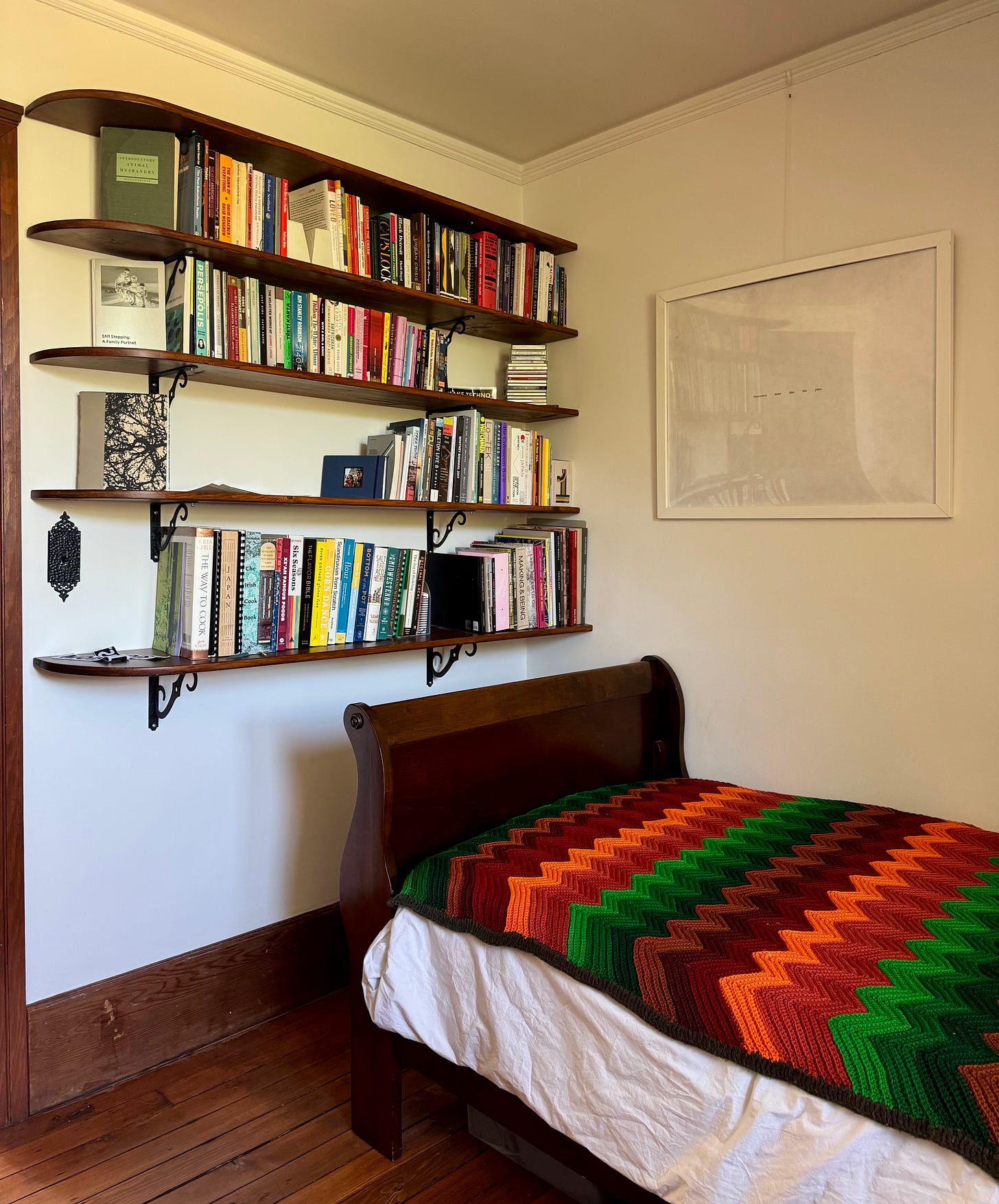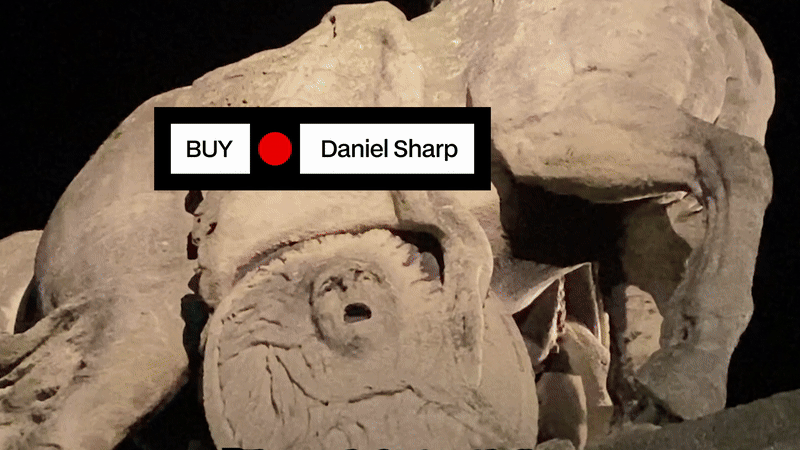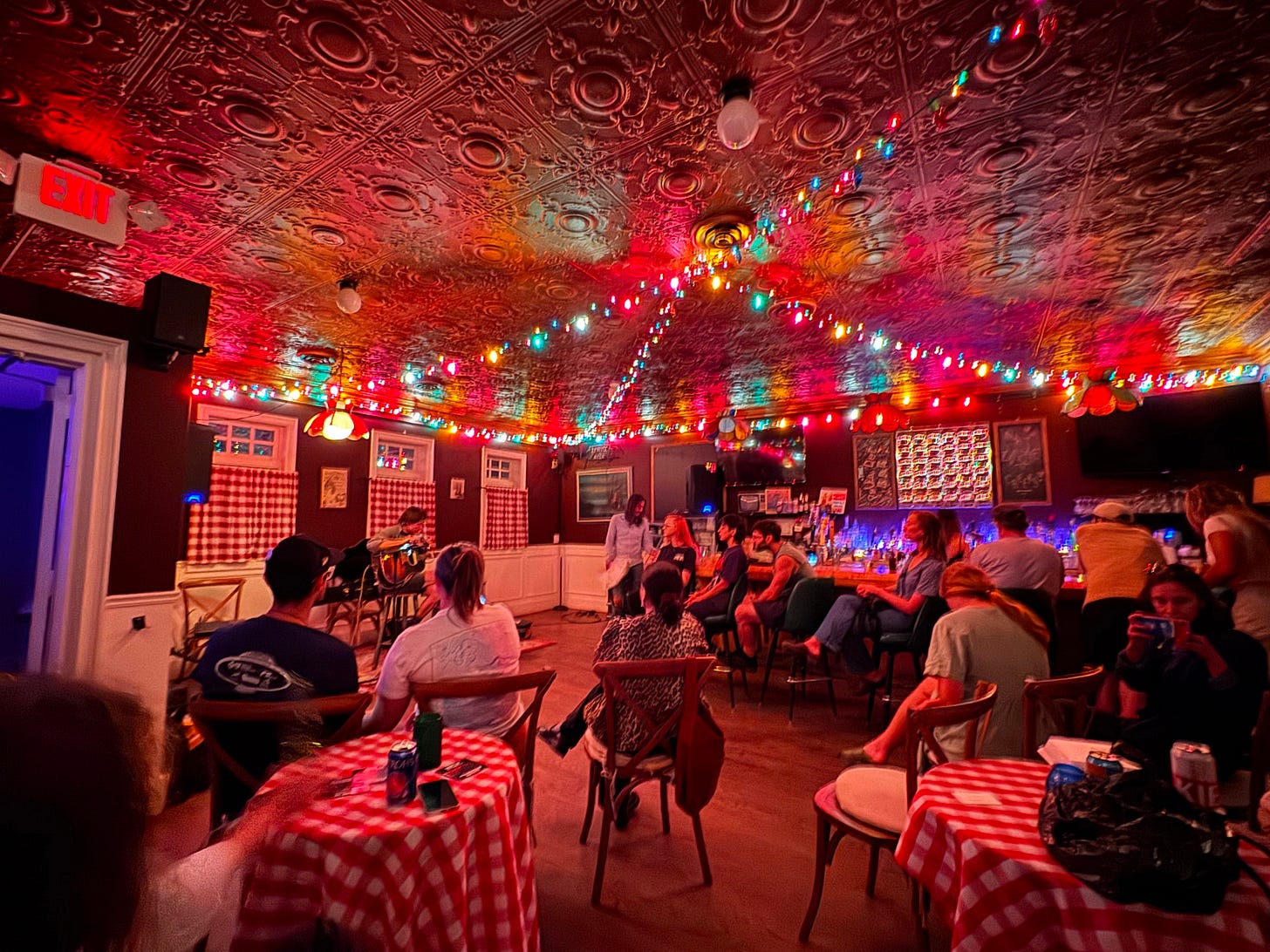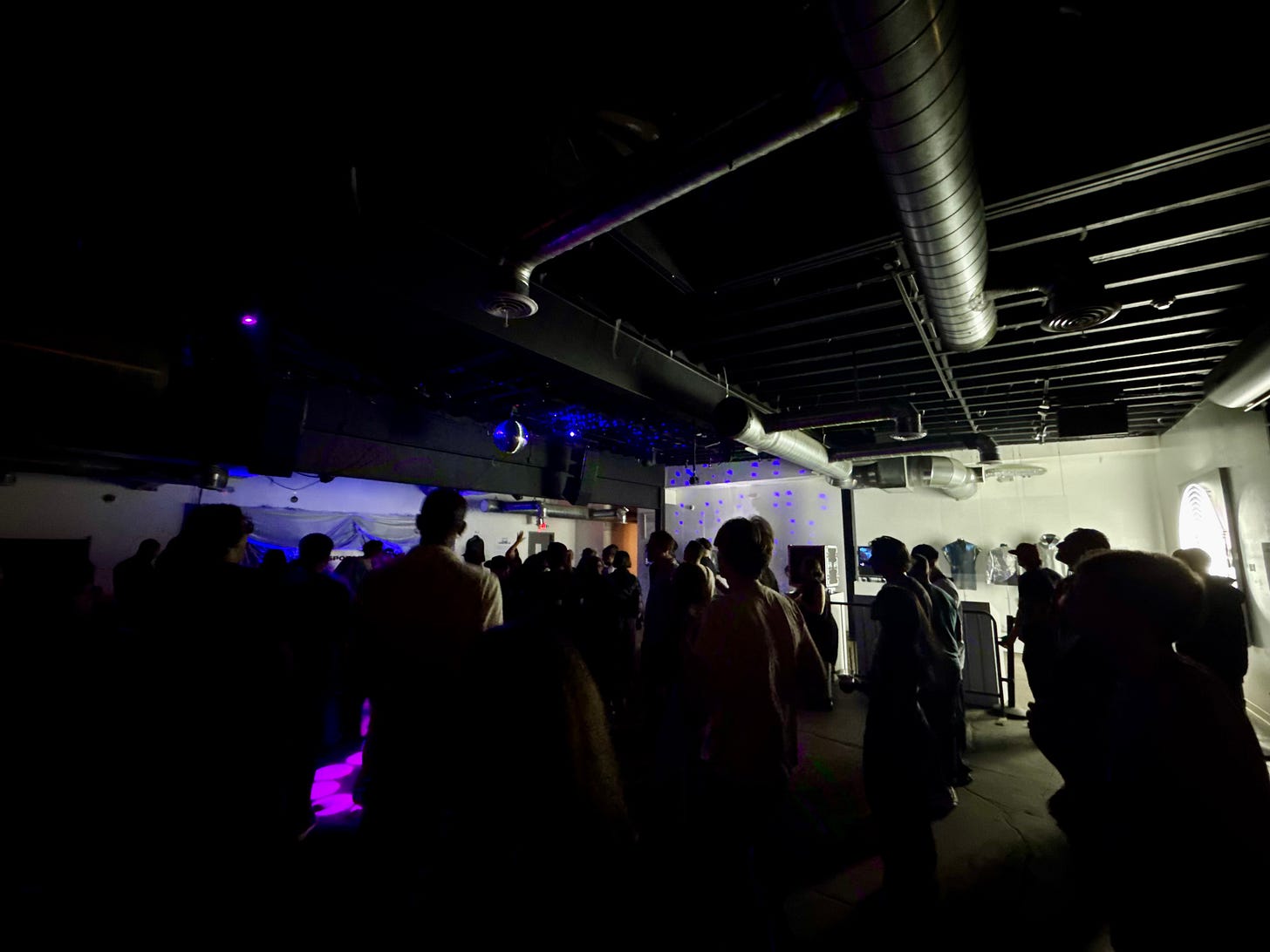On Physical Stuff
An effort to throw some support behind books, screenings, and IRL-ing.
Two verbs—connect and retreat—seem to have flipped definitions lately. It’s as if they’re in a dance of doublethink: what was once seen as “connecting” with people online now means to retreat from the lived reality around us, superglued to a screen serving ads one foot from our eyes. And what was once “retreating” from the internet now feels like connecting to literally everything else—animals, plants, land, sky, water, grass.
As more of us feel disillusioned by the internet, the movement back to physical reality seems evident. From the growth of zine fairs to Chloe Malle’s new limited, object d’art oriented Vogue print issues to the rise of merch and photobooks, we’re pointing to a mass return to physical stuff, if not a better balance between on and offline. I’m seeing it everywhere. And I think that’s a good thing.

Books
I’ll admit I’m no fan of Kindles or e-readers. I stare at a screen already for 6-10 hours a day, sometimes three at a time when I’m deep at the email factory (laptop, desktop, phone, yuck).
Instead, I like my reading to be physical, as often as it can be. See shelf above (lol).
After helping dozens of artists, small presses, and publishers publish their book on Kickstarter from 2017-2020 (many of them in the back of the bottom row from the photo above), I tackled one of my own. My last book, Queer Power! (2021) by Chitra Ganesh, was acquired by the Metropolitan Museum of Art. The effort allowed me to take a bit of a break from publishing (see lying fallow).
It’s slowly come back four years later, maybe in part because of this urge to return to making physical things, and maybe in part because there’s so much to talk about right now. I was brought on this year, for example, by Pulitzer Prize winner Mosab Abu Toha and National Geographic photographer Michael Christopher Brown to launch their new book, The Difference Between Bullets and Stones. It’s a ~420 page book that pairs Mosab’s poetry on Gaza with Michael’s photographs on the West Bank and Jerusalem. An introduction by Misan Harriman, one of the most widely shared photographers of the Black Lives Matter movement, will be included. 100% of all revenue after production costs will go to supporting children affected by the Gaza war through Doctors Without Borders and the Middle East Children’s Alliance.
It’s projects like these that remind me of Kiana Hayeri’s When Cages Fly (2024) that documents a women’s prison in Afghanistan; or Elliot Ross and Genevieve Allison’s American Backyard (Gnomic Book, 2019) that profiled the complex communities across the U.S.-Mexico Border; or AWC’s And babies (1969). War, fear, borders—families and children are caught in their crossfire. Ensuring these images are seen not only online but offline (on bookshelves, in archives) helps us slow down against a racing algorithm.
If the eye of the storm is ignored (or worse yet, swiped through), how will we help the hurt? Maybe, in the end, it’s this question that’s urging me to return to books.

Films
I recently partnered with Buy.Video, a no-ad, no-subscription platform where artists like myself can earn money directly from their videos by offering them for rent for a limited time. It’s like a pop up Netflix for independent artists and filmmakers.
What I like the most about Buy.Video is it compels people to actually rent a film of mine and watch it. It doesn’t just go on the bottomless list of “I have to get to that someday.” Instead, you’re encouraged to rent it, watch it with others, and dissect it like a live film club. Which, I should mention, is how my friends and I have returned to the big screen together. We go to the movies (“we make movies better…”) or tuck into our blankets at home. Sometimes the week’s TV is simply casting our photos from the last few weeks when we’re back from traveling. The “gathering” has made the time together special—as opposed to what I call a “phone party” (everyone in the same room together, silently on their phones.)
In other words: subvert the screen by watching things together. Try it with my film. Try it by casting photos to your TV. Whatever you try, try it with others.

And so much more
I could go on about garden poetry nights in Detroit, folk concerts in Polish bars, and techno legend residencies, but my last article was a behemoth, so I’ll spare us all.
What I want to get across is: physical stuff (the books we write and the art we watch together) might be a way out of this polarized, race-to-the-bottom era. Covid showed us how critical being in person is to the average human. There’s proof we’re relied on one another for at least the last 5,000 years—or 8,000 years—or more. I don’t believe we will solve our challenges if we all retreated to our handheld gadgets. So: it takes more than touching grass. Maybe touch grass with others, connected, together.
Thanks to Michael, Mosab, Molly, Carlton, Christine, Sara, Jeff, and many more who have helped make many of these mentioned projects happen.




A great read! Wonderful :)